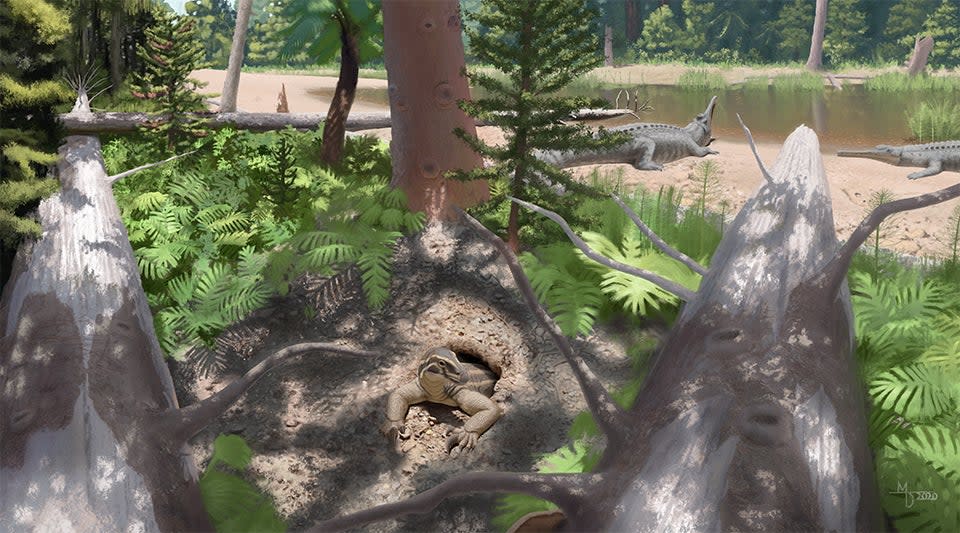Parks Service interns discover new species of 220-million-year-old reptile

A team of interns discovered a new species of 220 million-year-old burrowing reptile in Petrified Forest National Park in Arizona, according to the National Park Service.
Drepanosaurs were odd little guys and “possessed an array of strange morphologies including enlarged second claws, bird-like beaks, and tails ending with a claw,” the Park Service writes.
A team of student researchers from schools like Virginia Tech and Idaho State made a discovery that was even odder: most drepanosaurs had claws for climbing or living in trees, but their specimen, full name: Skybalonyx skapter, had claws meant for burrowing. Its name means “dung-claw digger” in Greek, the researchers told CNN, and its bones were found in a deposit of fossilized poop.
"Skybalonyx goes to show that prehistoric ecosystems, such as those at Petrified Forest National Park, were much more similar to the modern than previously thought, with animals climbing, burrowing, swimming and flying just like today," Xavier Jenkins, an Idaho State University PhD student who helped discover the fossils, told CNN.
Researchers analyzed Skybalonyx’s claws and found they had similar anatomy to today’s moles and echidnas. They believe the creature might have looked like a combination of an anteater and a chameleon.
The fossils, found in an area that was probably a swamp at the time, were so small that the paleontologists used a new method of screen-washing to discover them, where rocks are run through a series of metal screens with water and broken down.
The findings appeared on 8 October in the Journal of Vertebrate Paleontology.
Read more
T rex skeleton becomes most expensive dinosaur remains ever sold


